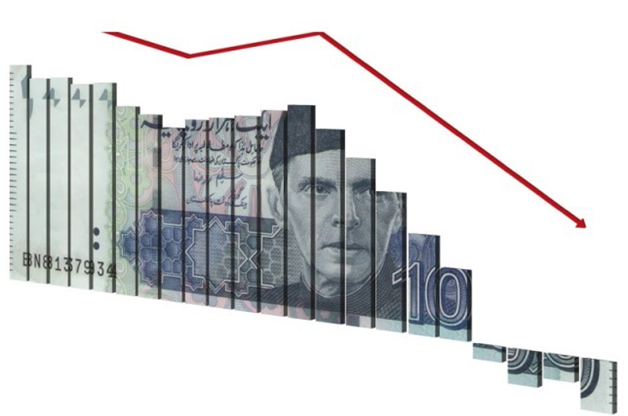ISLAMABAD: The finance ministry has hinted that economic growth is likely to remain below the budgeted target of 5 percent due to devastation created by floods.
Monthly Economic Update and Outlook December 2022, released by the Ministry of finance, shows that CPI inflation will remain in the range of 21-23%. Whereas standing water due to recent floods, may create further problems in achieving the assigned wheat sowing target.
As per the report, the average MEI, during the first 5 months of the current FY, points towards a positive but slow YoY economic growth.
The first four months of FY23 have witnessed a higher expenditure growth on the back of higher mark-up payments.
Currently, the government is facing the unprecedented challenge of providing relief to people in flood-hit areas.
The government is providing relief through the Kisaan package and BISP. Although the government is committed to achieve fiscal consolidation by reinforcing fiscal discipline, additional spending due to flood-related activities may put significant pressure on total expenditure.
As in many other countries, Pakistan’s economic activity remains currently below potential, implying a negative output gap. During the first five months of FY2023, Pakistan’s economy showed signs of resilience to domestic and global challenges. Despite facing inflationary pressures, trade and current account deficits are continuously showing
improvement, which is a sigh of relief for financing challenges.
On the fiscal front, fiscal consolidation is topmost priority to achieve targeted fiscal deficit despite the government is facing the unprecedented challenge of providing relief to people in flood-hit areas.
For FY2023, economic growth is likely to remain below the budgeted target due to devastation created by floods. This combination of low growth, high inflation and low levels of official reserves is particularly challenging for policy makers. In the short run, demand management policies by Pakistan’s Central Bank and Government are designed to fight inflation and protect official reserves and protect inclusive growth.
But in the long run, the Government aims to stimulate the supply side to elevate the long run potential growth rate of the economy. Increasing the long run growth trends of output, per capita real incomes and employment can only be achieved by stimulating investments in new production capacities and improving overall productivity.
The report states that wheat crop for Rabi season 2022-23 has been sown on an area of 20.77 million acres . The input situation is expected to remain favourable due to incentives announced in Kissan Package 2022 that will boost agriculture productivity.
The CPI recorded at 23.8 percent on a YoY basis in November 2022 as compared to 26.6 percent in the previous month. On a MoM basis, CPI increased to 0.8 percent in November 2022 as compared to an increase of 4.7 percent in the previous month and an increase of 3.0 percent in November 2021. The average CPI in the first five months of the current fiscal year remained 25.1 percent compared to 9.3 percent during the same period of last year. The SPI for the week ended on 22 December 2022, recorded a decrease of 0.11 percent as compared to previous week.
The FBR ‘s net revenues increased by 9.2 percent to Rs 1317 billion during Jul-Oct FY2023 against Rs 1205 billion last year. Tax collection grew by 16.8 percent to reach Rs 2139 billion in the first four months of FY2023 up from Rs.1830 billion in the comparable period of last year. In contrast, non-tax collection was reduced by 23.4 percent to Rs 346 billion during Jul-Oct FY2023 against Rs 452 billion last year.
Total expenditure rose by 26.1 percent to Rs 2737 billion during Jul-Oct FY2023 against Rs2171 billion in the same period of last year. The increase is driven by a 34.4 percent growth in current spending. While PSDP expenditures stood at Rs 98 billion during Jul-Oct FY2023 against Rs 207 billion in the comparable period of last year.
Overall, the fiscal deficit stood at 1.5 percent of GDP (Rs.1266 billion) during Jul-Oct FY2023 as compared to 0.9 percent of GDP (Rs.587 billion) last year. Primary balance posted a surplus of Rs.136 billion (0.2 percent of GDP) against the surplus of Rs 206 billion (0.3 percent of GDP) last year.

























please